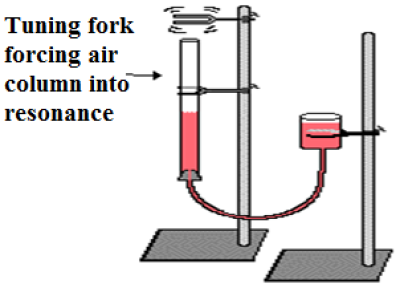Course description
Damped Oscillation:
The bob of a simple pendulum (Fig. 7 a) executes simple harmonic motion and if there is no loss of energy by friction or otherwise, the pendulum will go on oscillating with the same time period and amplitude for any interval of time. These types of vibrations are referred to as undamped free vibration (Fig. 7 b).
In actual practice, a simple harmonic oscillator almost always vibrates in a resisting medium, like air, oil, etc. Consequently when the oscillator vibrates is such a medium, energy is dissipated in each vibration in overcoming the opposing frictional or viscous forces. The amplitude of vibration, therefore, goes on decreasing progressively with time (Fig. 7 c). The frictional or viscous forces, which are non-conservative in nature, have thus a damping effect on the oscillations and are referred to as damping, resistive or dissipative forces. In the presence of these forces, the amplitude of vibration decreases continuously with time and finally the oscillations die out. Such vibrations are called free damped vibrations.
Thus a body executing simple harmonic oscillations in a damping medium will be simultaneously subjected to the following two opposing forces: (i) the restoring force acting on the body which is proportional to the displacement (y) of the body and acts in a direction opposite to the displacement. Therefore, the force is – k.y (Fig. 7 d) where k is the force constant. (ii) a damping, resistive or dissipative force which is proportional to the velocity (v) of the oscillating body.
Thus this kind of force is ; where μ is a proportionality constant. It is a positive constant called damping coefficient of the medium and may be defined as the resistive or dissipative force per unit velocity. The negative sign signifies a restraining influence on the
Forced Oscillation: When a body executing simple harmonic motion in a medium like air, its oscillations, as we know get damped, i.e., its amplitude falls exponentially with time to zero due to dissipation of energy.If, an external periodic force is constantly applied to the oscillator, of a frequency not necessarily the same as the natural frequency of the oscillator, and where the damping force tends to retard the motion of the body, but the applied force tends to maintain it. After some initial erratic movements, the body ultimately oscillates with the frequency of the applied or driving force and a constant amplitude and phase so long as the applied force remains in operation (Fig. 8). Such vibrations of the body are called forced (or driven) vibrations. The amplitude of this forced vibration of the body depends on the difference between the natural frequency and the frequency of the applied force. The amplitude will be large if difference in frequencies is small and vice versa.
Resonance:
Resonance is a phenomenon that consists of a given system being driven by another vibrating system or by external forces to oscillate with greater amplitude at some preferential frequencies (Fig. 9). Moreover, in the absence of damping, resonance takes place when the natural frequency of the oscillator is equal to the frequency of the driving force. Frequencies at which the response amplitude is a relative maximum are known as the system's resonant frequencies, or resonance frequencies. Resonance phenomena occur with all types of vibrations or waves: there is mechanical resonance, acoustic resonance, electromagnetic resonance, nuclear magnetic resonance (NMR), electron spin resonance (ESR) and resonance of quantum wave functions.


















